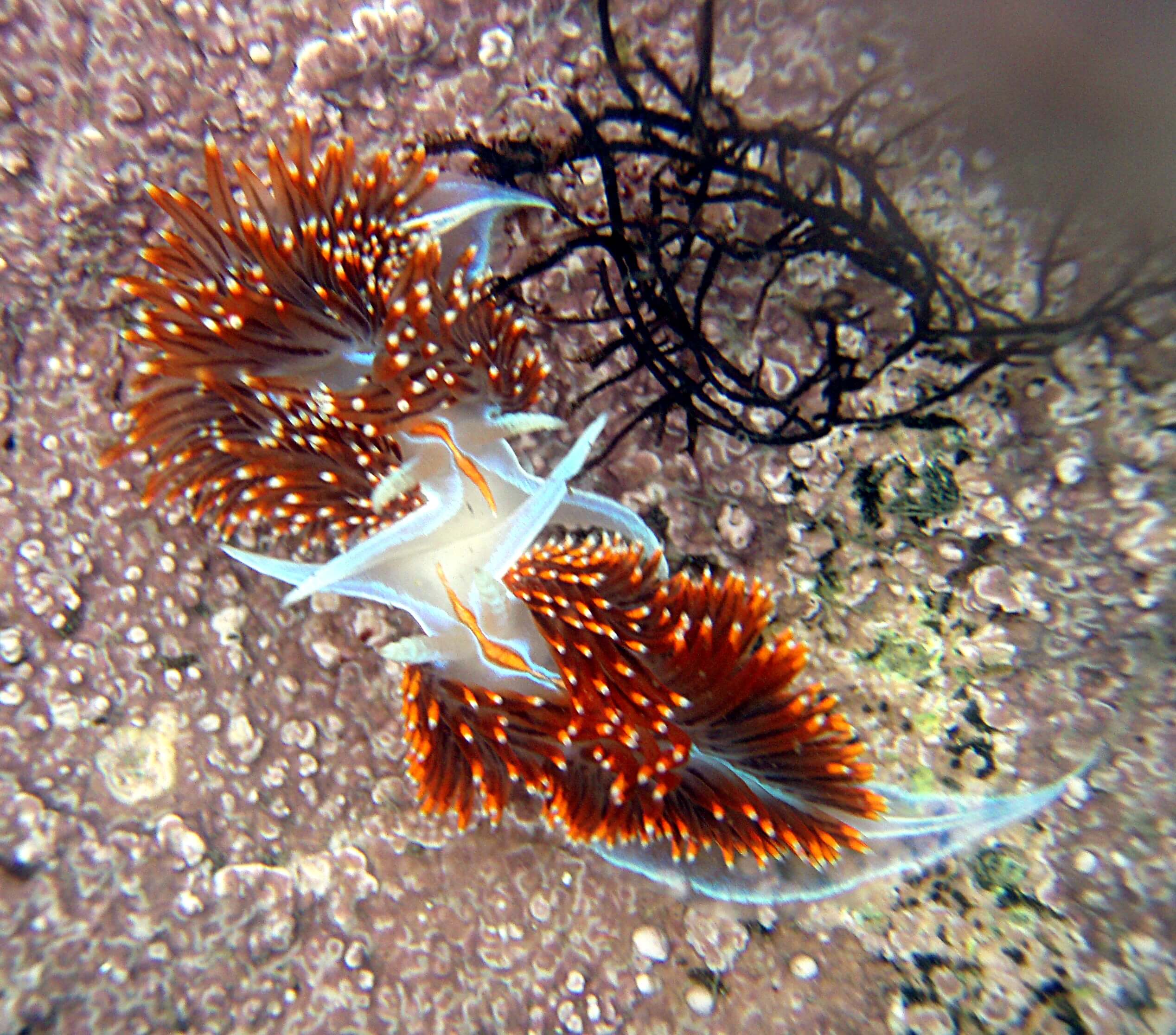There are strange things to be found when the tide pulls in, exposing the ocean's secrets. Pools of water collect in pockets of sand and rock. There you'll catch glimpses of an alien landscape, filled with all sorts of exotic, colorful creatures, some captivating, some terrifying.
Beachcombers hunt for these little crevices, scouring the coast for a chance to observe marine life. Anemone, starfish, crabs, and limpets are all common, and they're all amazing discoveries. But one of their greatest finds is the nudibranch, a tiny beast known for commanding attention.
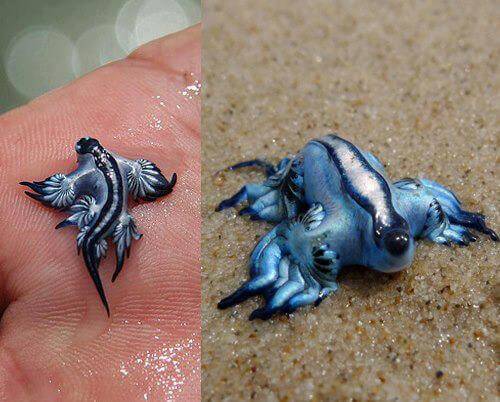
Imtorn, CC BY-SA 3.0
These confounding oddities are alien in ways that humans could barely understand. They sense things differently. They eat differently. They mate differently. Their organs and makeup are completely foreign, and they vary heavily depending on the subspecies.
Nudibranchs are soft-bodied gastropod mollusks that shed their outer shells after the larval stage, though some do retain internal shells among other defenses. While they are a part of the opisthobranch (sea slug) family, there are many taxonomic groups that are only distantly related to them.
The name "nudibranch" (pronounced with a "k" sound) comes from the Latin nudus and the Greek bránkhia, defined as naked gills, due to the fact that their gills are exposed to open water.
Unlike humans, nudibranchs perceive touch, taste, and smell through cephalic tentacles located on their heads. Their diets vary widely. They feed on coral, hydrozoids, sponges, algae, anemone, and even cannibalize members of their own species. Some, known to skim the surface of the water, feast on jellyfish and Portuguese man o' war.
They can be found worldwide, from the Arctic to the Southern Ocean. They're known to exist in all depths, even as deep as 2,300 feet, though they tend to congregate in warm, shallow water that is more hospitable to life.
Nudibranchs hunt their mates using their rhinophores, retractable nose horns located on their heads. Like other members of their taxonomical class, they are hermaphroditic.
Though they do require mutual impregnation, they are capable of both fertilizing and producing eggs, like the ribbon pictured below--a favorite feast for stray marine life.
The amount of eggs nudibranchs lay varies heavily. It could be one, or it could be thousands, and their ribbons take many forms. Some can be found wrapped around stalks, while others float like sea blossoms in the water.
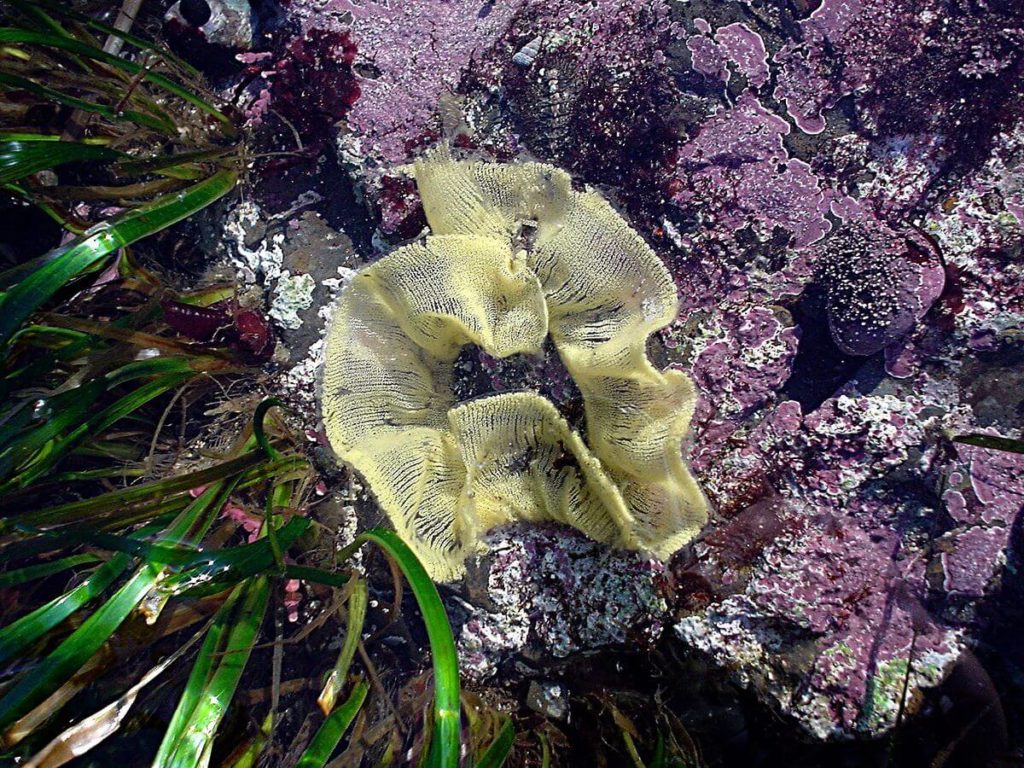
Brocken Inaglory, CC BY-SA 3.0
Stunning Biodiversity
There are many things that make the nudibranchs special, but what is most apparent is their extreme biodiversity. They can come in the form of glowing yellow goo, a gray glider skimming the surface of the ocean, or a purple slug sneaking across the coral. As a species, they do have common characteristics, but that wouldn't seem to be the case if you saw them sitting side by side on a table.
There are two main kinds of nudibranchs, separated into 3,000 different subspecies. The first is dorids, who have tufts of gills on their back that can be retracted into their bodies at whim. The second is aeolids, which have finger-like projections called cerata that serve a variety of functions, including breathing.
They resemble all manner of sea life, from blowfish to tiny manta rays and even cuttlefish. The taylor's sea hare, which lives in the arctic, takes the appearance of a green leaf bug. Others settle into the forms of common snails or camouflage themselves as plants. Their appearance depends on many factors, including their diets and the region where they're found.
Oregon Varieties
More than 200 of the 3,000 different subspecies of nudibranchs can be found on the Oregon coast.
One common eccentric is the Dirona albolineata (pictured below). It takes the appearance of a long blossom, either orange, opalescent, or lavender.
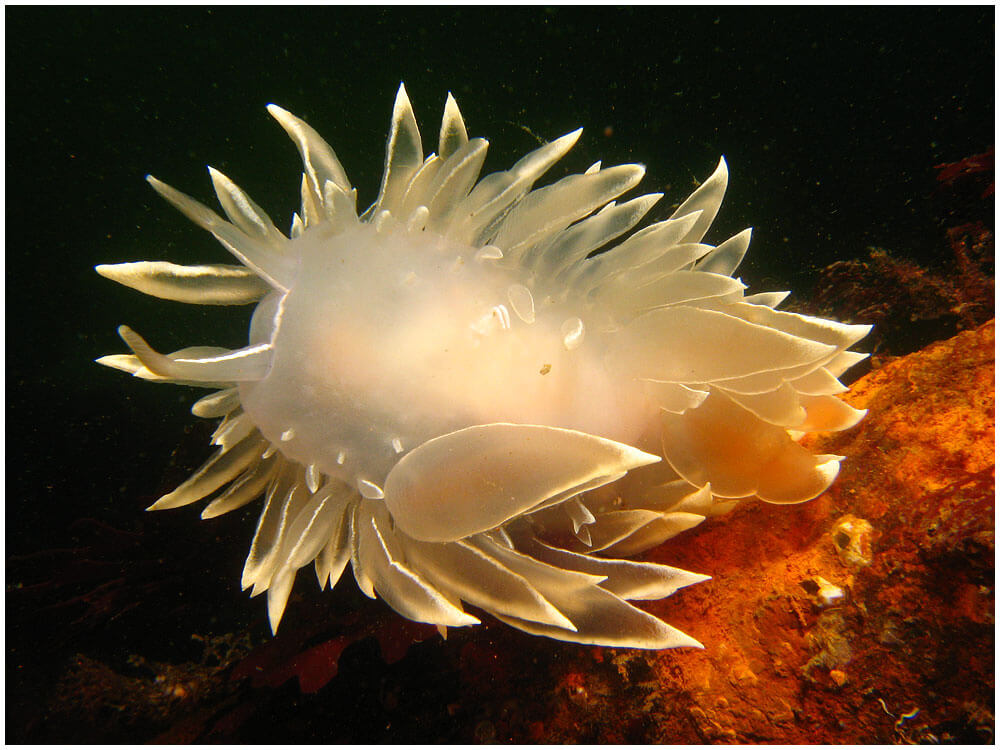
Dan Hershman, CC BY 2.0
The Antiopella fusca (pictured below) also has petal-shaped appendages tinged with yellow tips.
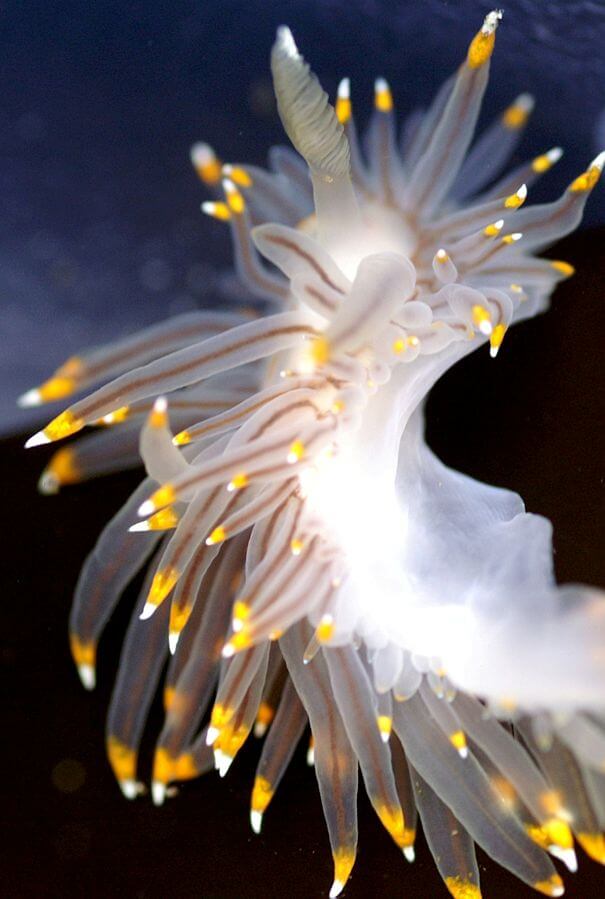
Minette Layne from Seattle, Washington, USA, CC BY 2.0
The bioluminescent thick-horned nudibranch resembles a clear slug covered in orange fur. It does show up from time to time, and when it does it can always be identified by the orange stripe on its head and the white on its cerata.
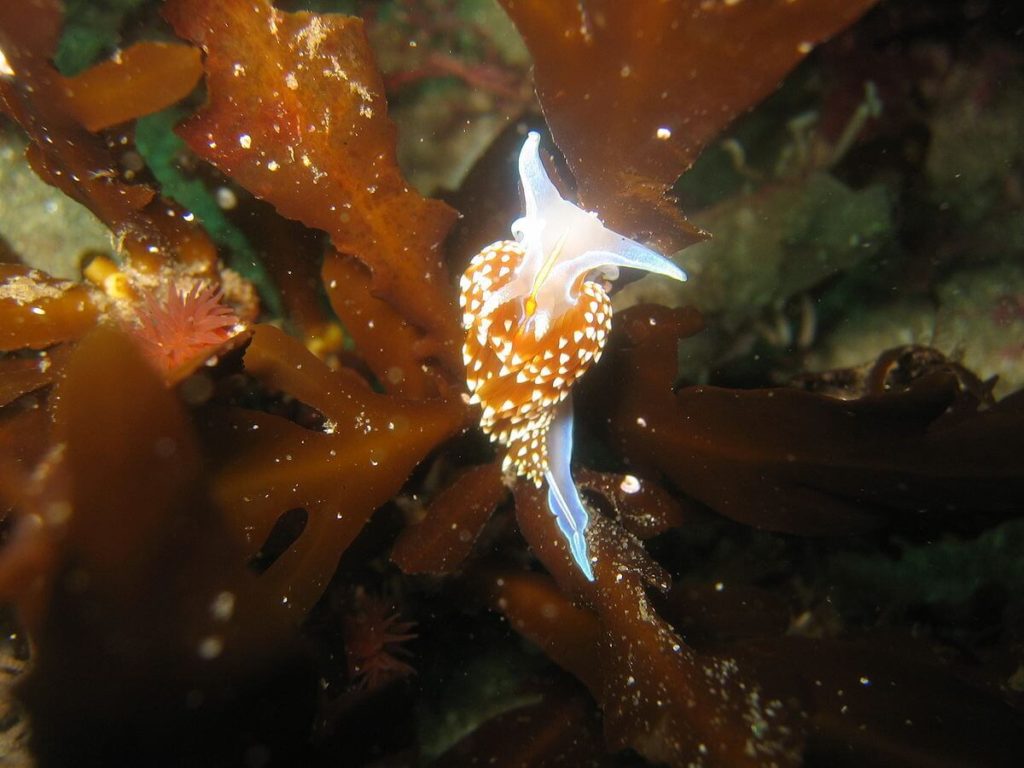
CC BY-SA 3.0
Other common coastal subspecies take the form of orange coral or floating octopus limbs. There's blobs of countless shapes and sizes. Many are only a few centimeters, but others can grow to almost 12 inches long.
Emerald Diving has a comprehensive compendium of different subspecies, including the varieties found in the Pacific Northwest.
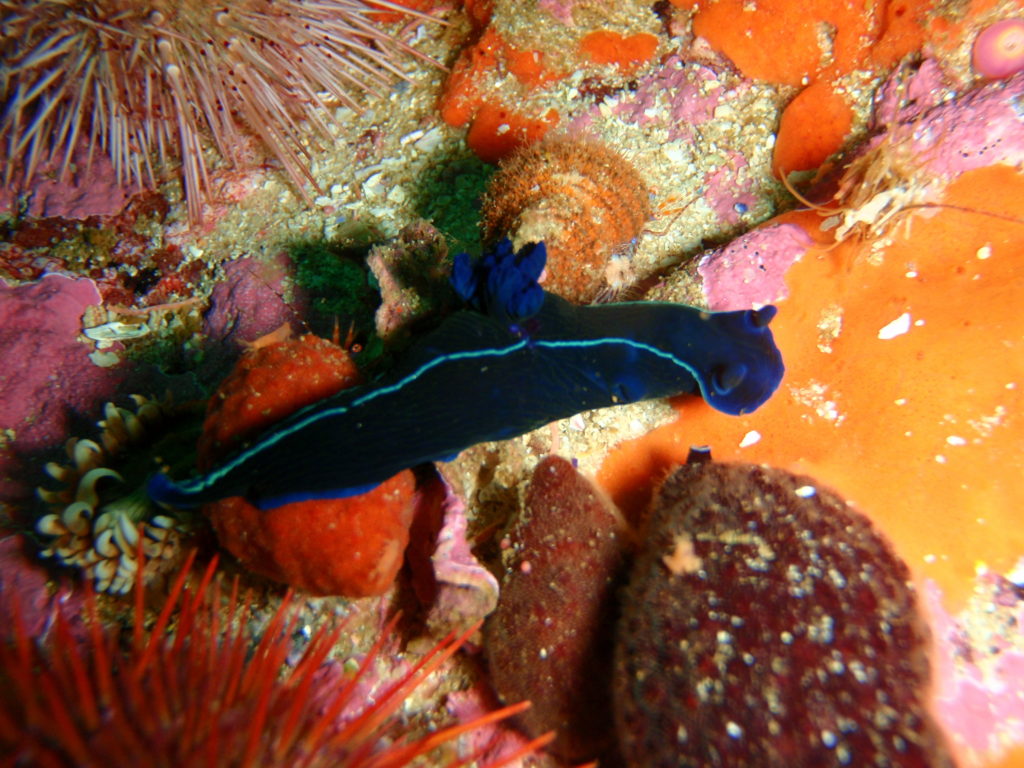
Peter Southwood, CC BY-SA 3.0
Masters of Adaptation and Biochemistry
As most of us already know, when you're out in the wild and you see a brightly colored animal, whether it's a red frog or an orange lizard, it's probably not a good idea to pick it up. This rule doesn't just apply in the jungle. It's something that we should live by, even on the Oregon coast. In fact, there are plenty of venomous creatures found inside the tide pools, many of which can pack a punch. But there's nothing out there like the nudibranch.
Nudibranchs are the ocean kings of the brightly colored warning sign. They know how to stand out to protect themselves, and they're no strangers to poison.
Scientists don't know how they do it, but collect stinging cells found in hydrozoids, and deposit them in various parts of their bodies, like the cerata. That way they can use the toxins to kill anything that touches them. Some forms of nudibranch are actually deadly to the touch.
They’ve also found that by filling their bodies with compounds that other marine life hate, like those present in sponges, they make themselves unappetizing or inconspicuous to larger predators. They adapt this technique wherever they go, utilizing what's available to match the tastes of the surrounding ecosystem. It's genius.
The biochemistry of the nudibranch has long been under scrutiny by the medical community for its potential applications in cancer treatments. There was a recent study published on the subject in the National Library of Medicine.

